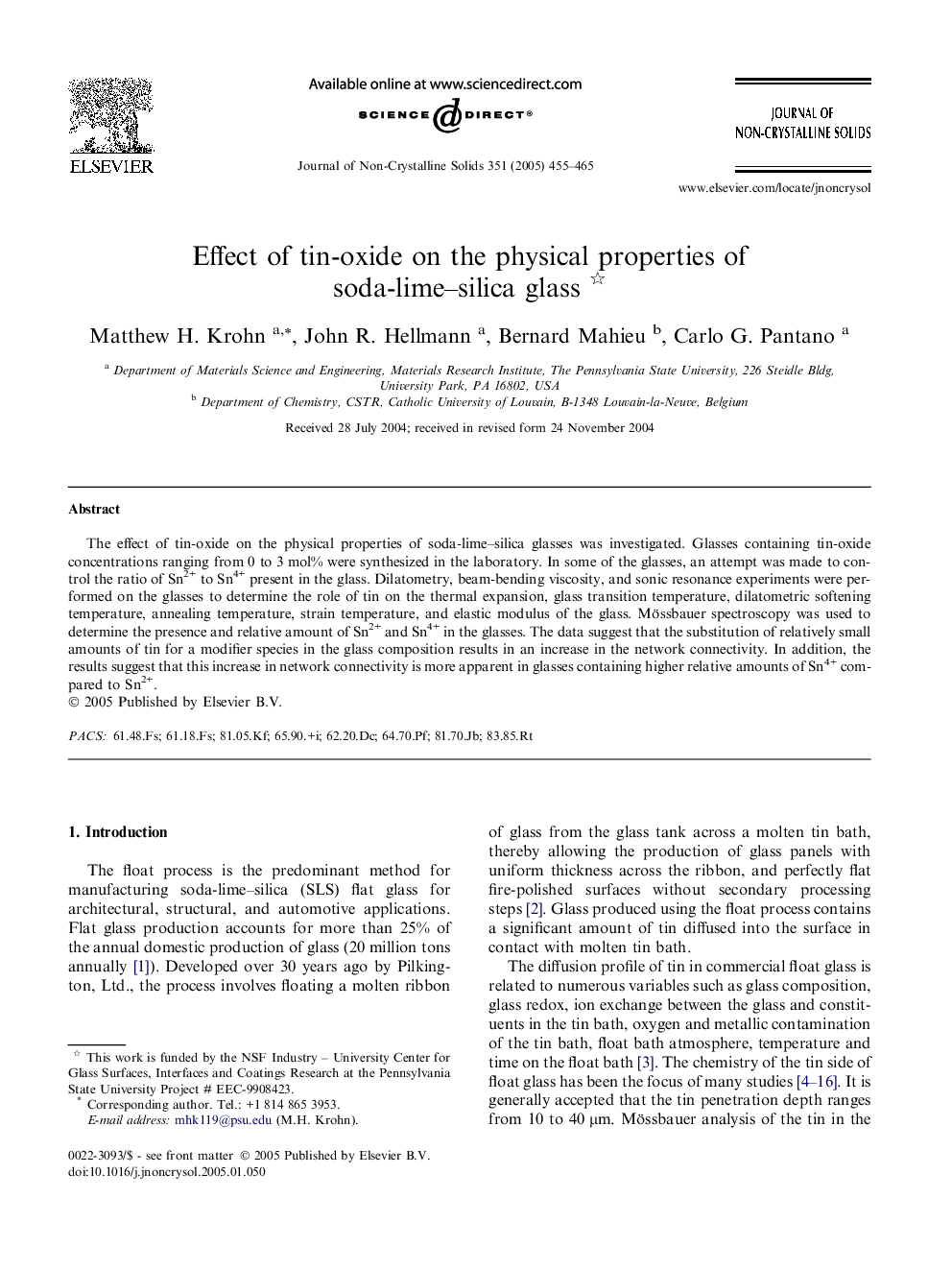| Article ID | Journal | Published Year | Pages | File Type |
|---|---|---|---|---|
| 9778205 | Journal of Non-Crystalline Solids | 2005 | 11 Pages |
Abstract
The effect of tin-oxide on the physical properties of soda-lime-silica glasses was investigated. Glasses containing tin-oxide concentrations ranging from 0 to 3Â mol% were synthesized in the laboratory. In some of the glasses, an attempt was made to control the ratio of Sn2+ to Sn4+ present in the glass. Dilatometry, beam-bending viscosity, and sonic resonance experiments were performed on the glasses to determine the role of tin on the thermal expansion, glass transition temperature, dilatometric softening temperature, annealing temperature, strain temperature, and elastic modulus of the glass. Mössbauer spectroscopy was used to determine the presence and relative amount of Sn2+ and Sn4+ in the glasses. The data suggest that the substitution of relatively small amounts of tin for a modifier species in the glass composition results in an increase in the network connectivity. In addition, the results suggest that this increase in network connectivity is more apparent in glasses containing higher relative amounts of Sn4+ compared to Sn2+.
Related Topics
Physical Sciences and Engineering
Materials Science
Ceramics and Composites
Authors
Matthew H. Krohn, John R. Hellmann, Bernard Mahieu, Carlo G. Pantano,
